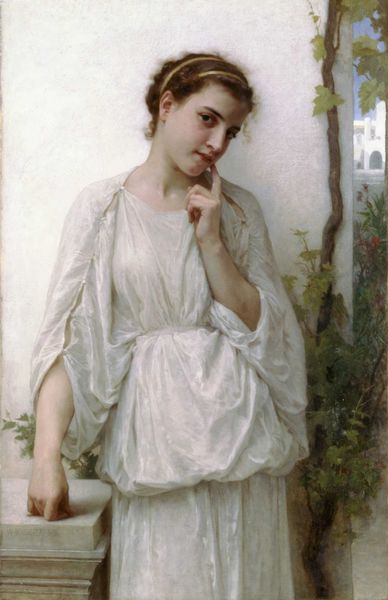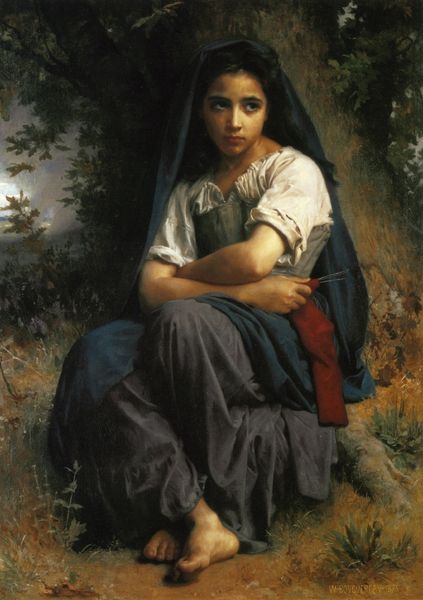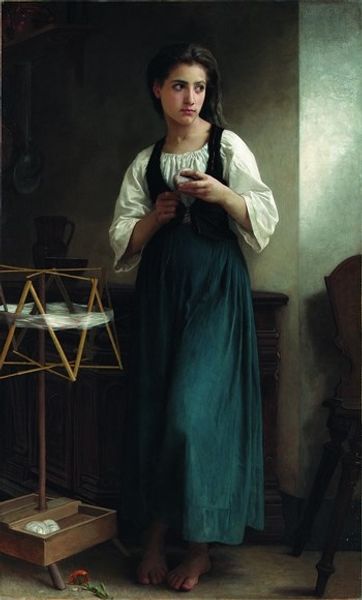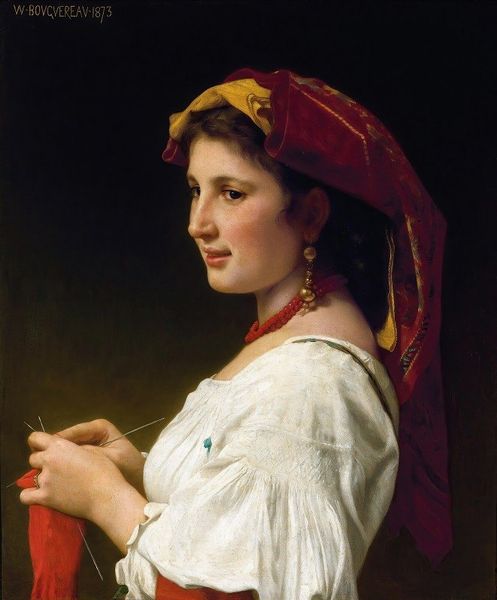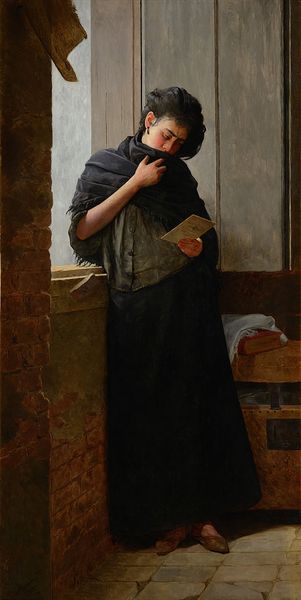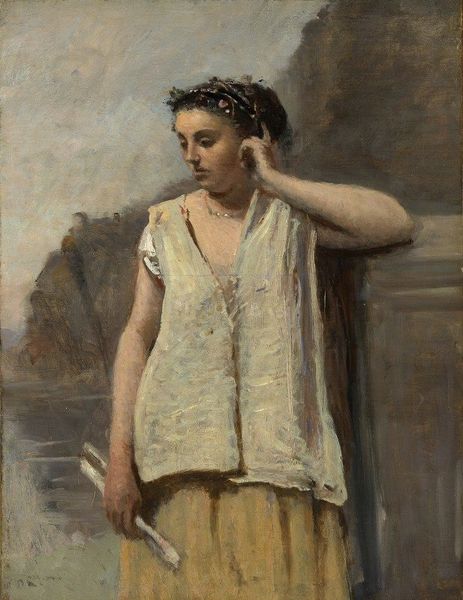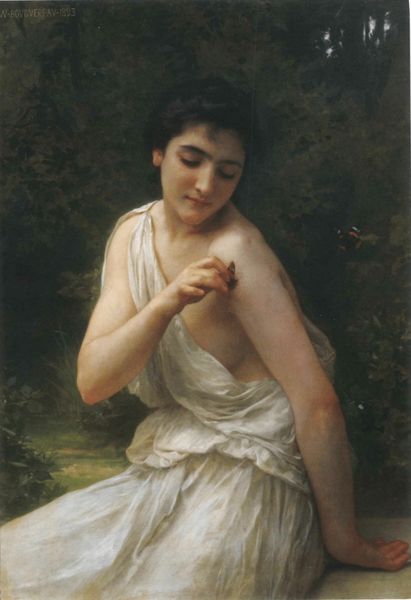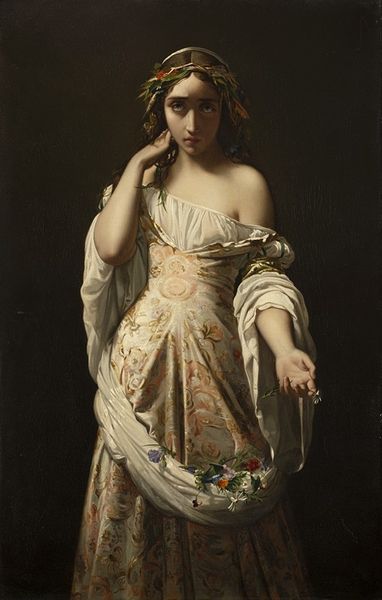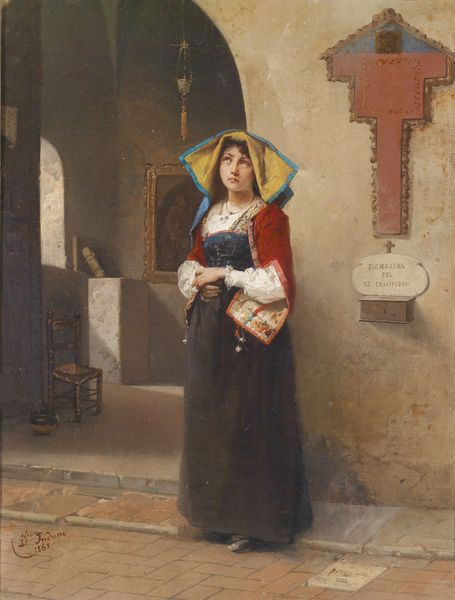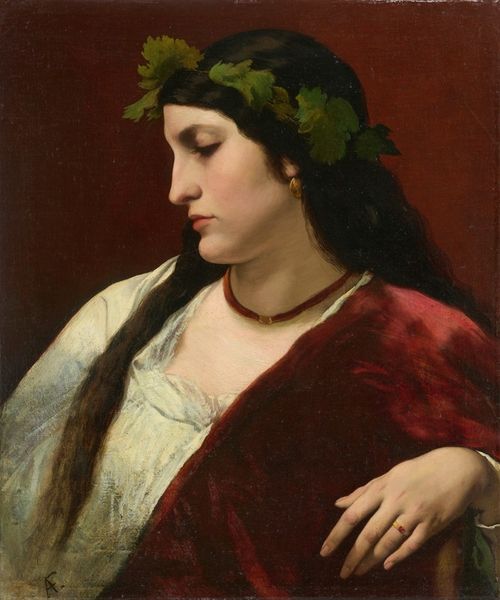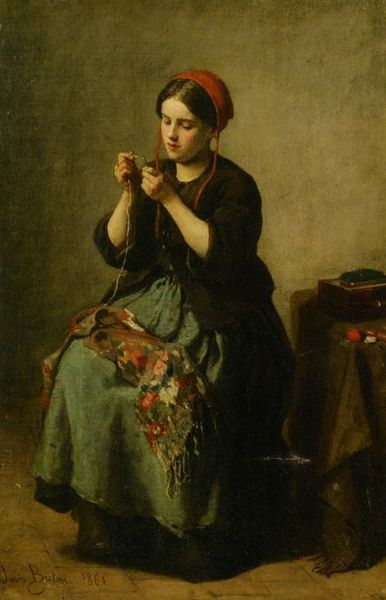
Dimensions: 131 x 90 cm
Copyright: Public domain
Curator: Take a look at "Rustic Toilet" painted by William Bouguereau in 1869. It's an oil painting in the academic style, demonstrating realism, portraiture, and romantic themes. What's your first take? Editor: The woman is captivating; her face is so realistic and tender! And her costume: white puff sleeve blouse under black vest, but then the yellowish almost metallic skirt. I'd love to know more about this shiny, lavish textile contrasting the rather modest dark background. Curator: Note the way Bouguereau captures light. Observe how the soft illumination of the cloth of the skirt plays against the subdued dark. What could he be attempting by depicting the skirt in such an eye-catching, elaborate way? Editor: Possibly hinting at aspiration beyond her immediate material conditions? Looking at its craft, the weave is remarkably depicted. Its metallic reflection suggests imported fabrics or a market commodity, subtly placed there within a genre painting as a sign of emerging capitalist forces. Curator: Interesting. I see her positioning the red ribbon in her hair and wonder what message is embedded in the way Bouguereau portrays the ritual and preparation for public display and feminine identity. This links the portrait with an external audience in some form. Editor: Indeed. But who is the audience? Genre painting allowed for the depiction of women engaging in ordinary tasks, but always had specific conditions of class, consumption, and display. The type of cloth and ornament marks not simply beauty but access to luxury and markets. It turns rural life into spectacle. Curator: And the steps nearby? Could they function almost as a theatrical stage? What I admire the most is his control of the figure, from her gaze, so soft, so controlled, to the elaborate draping of the skirt which all come together to complete the message of romantic allure within a moment in time. Editor: For me, it is a story about a culture in transformation shown via a combination of materials – pigment, imported cloth, and artistic production that is not simply romantic in its aestheticization but indicative of industrial transformation, material desire, and perhaps alienation. It provides insight into society at the time. Curator: Thank you; I am reminded now to think beyond form and to see beyond surface as well. Editor: It seems an artist can invite new visions from different angles!
Comments
No comments
Be the first to comment and join the conversation on the ultimate creative platform.
